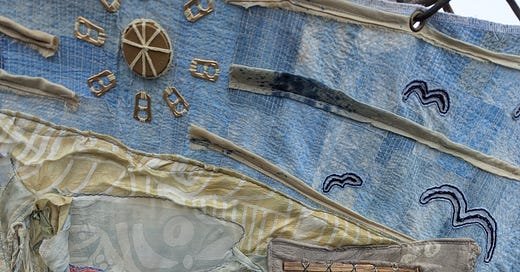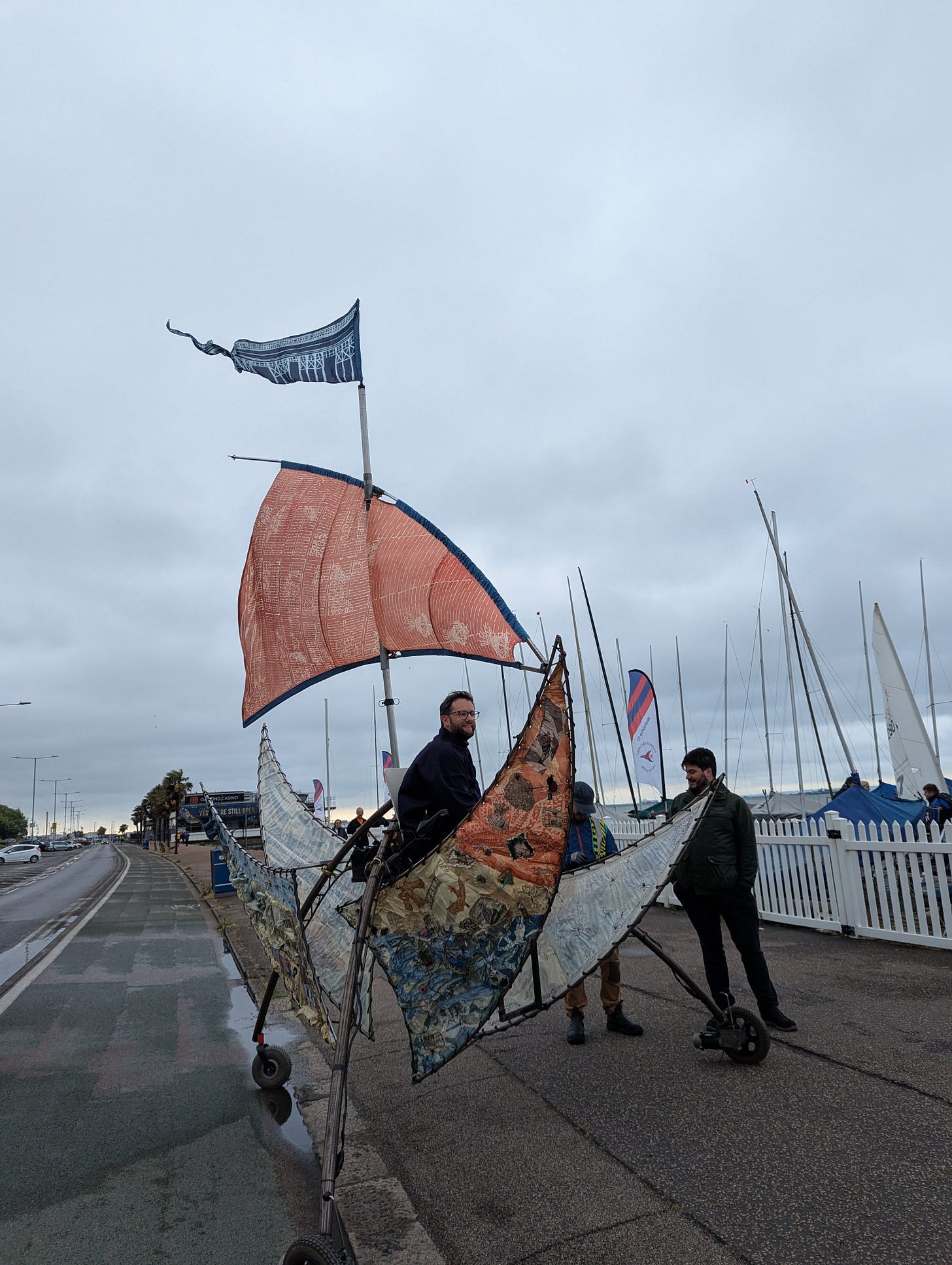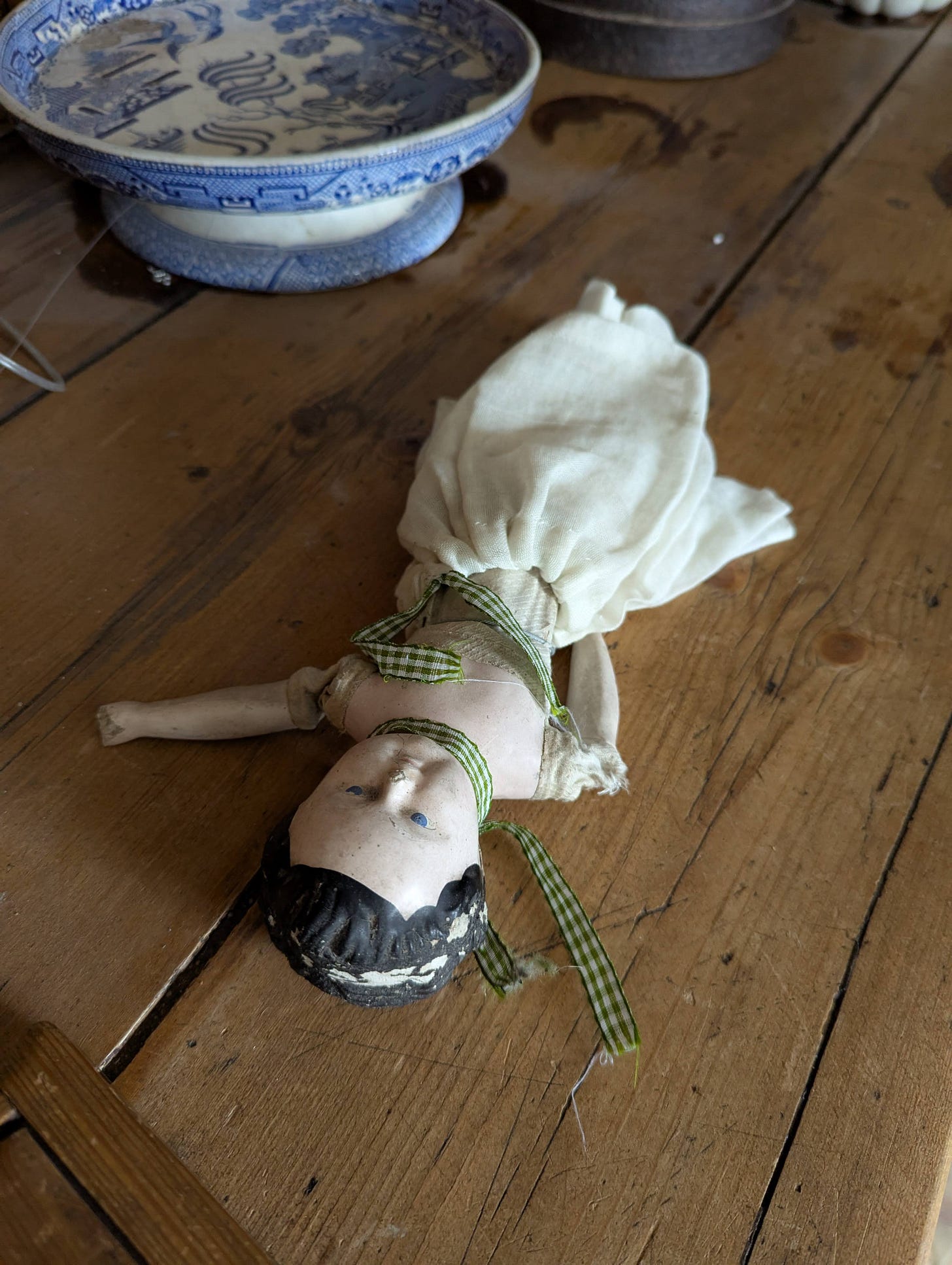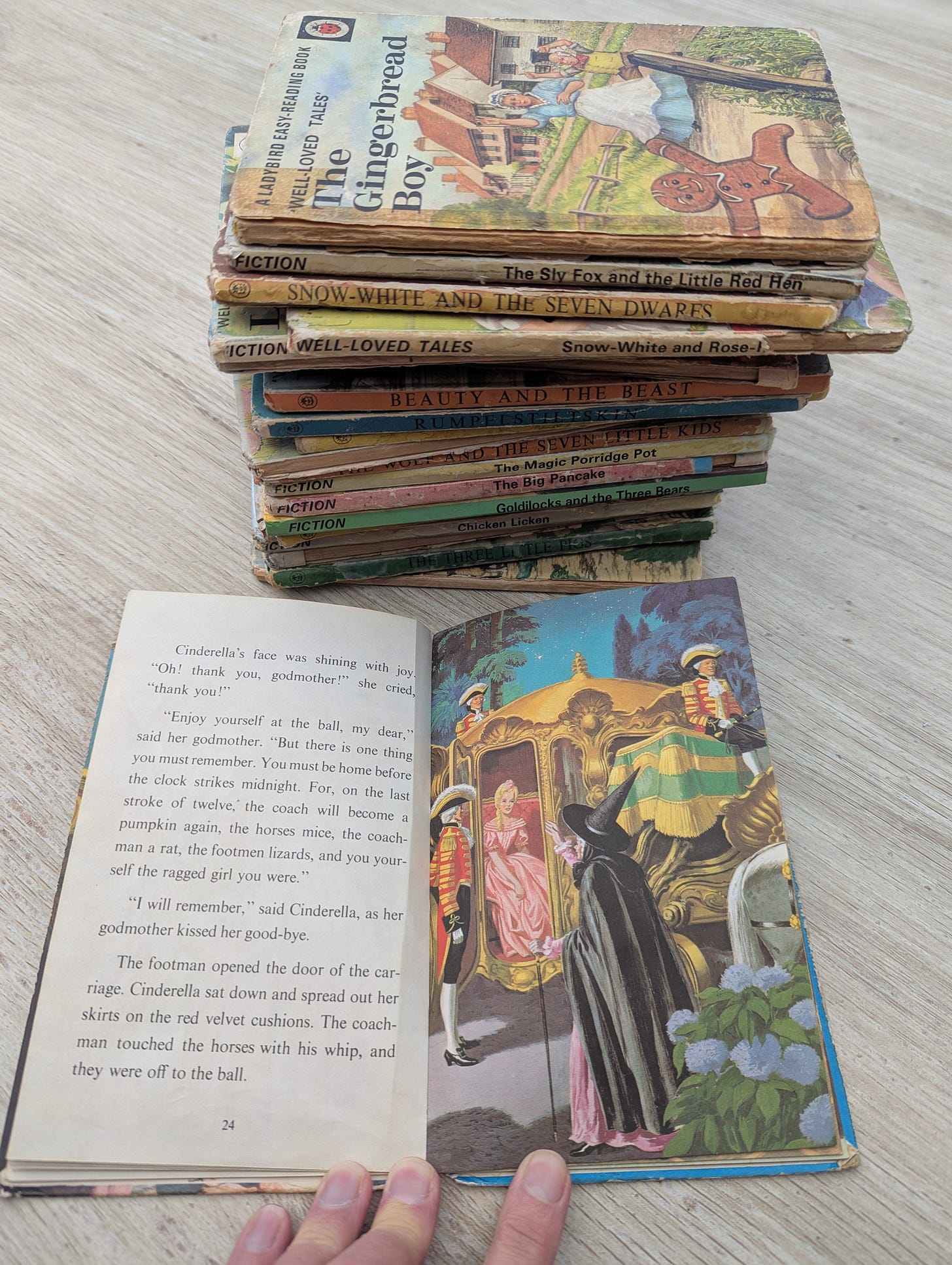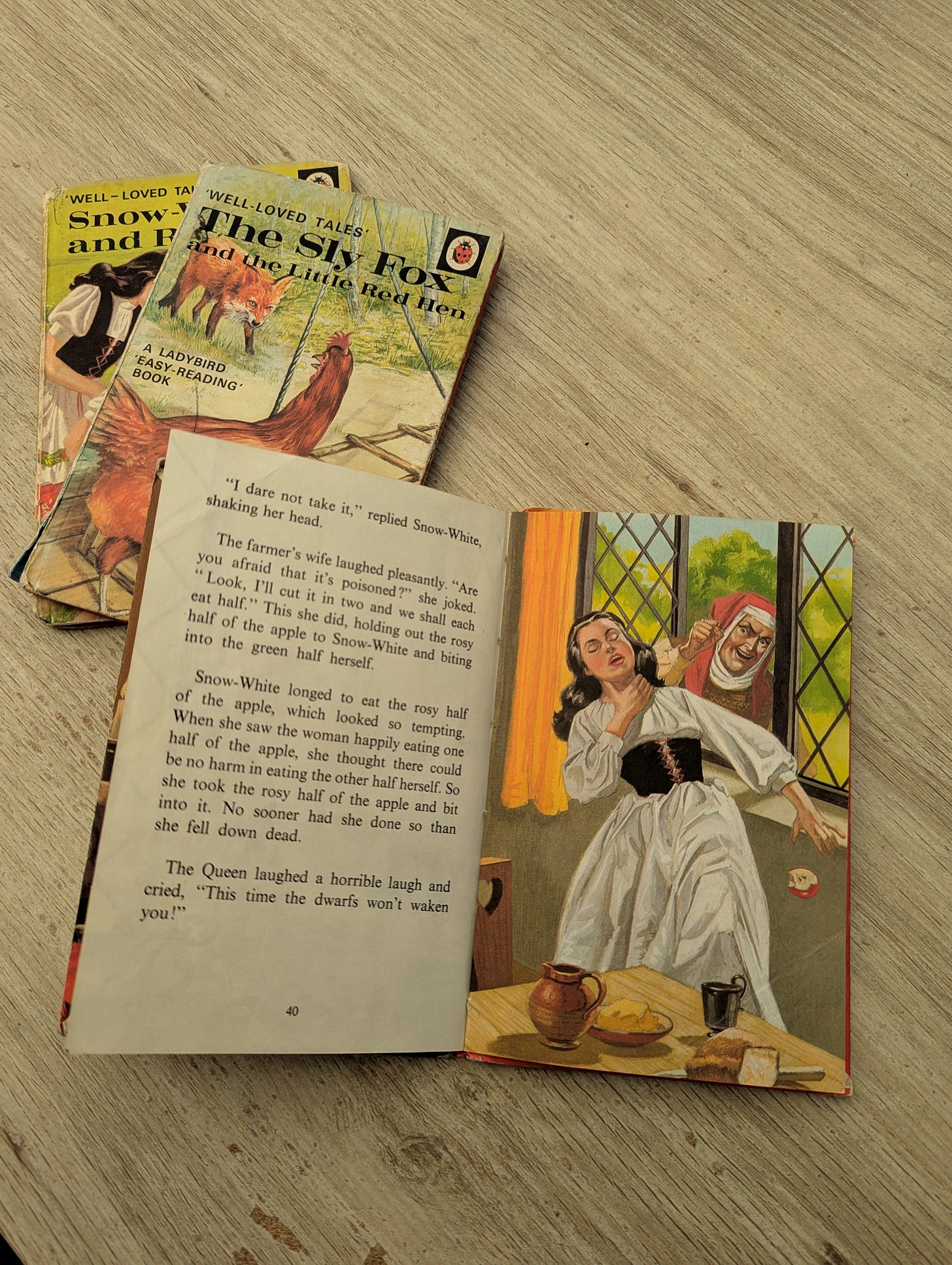May Roundup - Landlubbers, Ladybirds and Loving your Craft
Ladybird as an introduction to Fairy Tales, a Landlubbers and Jacktars Festival, and Elizabeth Gilbert's book Big Magic.
Where I went
It’s been a glorious spring here in eastern England, with plenty of opportunities to get about locally by bike or by foot. I’ve found it hard to settle on just one to describe, but I’ve settled for the Jacktars and Landlubbers event.
This was part of Beach of Dreams, a festival which celebrated the coast all down the east of Britain and called for us to take more care of it. A local cultural programme, T100, organised the section along the north bank of the Thames Estuary, including four days of travelling it from Shoebury to Tilbury, by foot or by water. I joined for one of the days as a decided landlubber. Alongside us sailed a flotilla of boats from a local yacht club, fighting the choppy water. And behind us trundled a land boat with a framework that was a whole story in itself. A local sewing group had made flags for an earlier event and driven the poles into the sand on the shore but that night a storm blew up, leaving the flags in shreds. Undaunted, the sewing group made new flags, then crafted the shreds into collage work for this land boat, threading in found rubbish too, to highlight the muck that pollutes the river and the shore. And then this tireless crew made new flags, some of which we carried as we walked. The cloth is dyed – again, by the sewing group – using local plants. Apparently roots are much more useful than flowers for giving good colours.
We were encouraged on our way with stops both for food and for stories, including tales of Old Leigh at its museum. Leigh-on-Sea is nowadays a pleasant suburb of Southend, only traces remaining of the old fishing village with its industries like pottery. The pottery has long since disappeared under new builds, which currently struggle with problems due to part of the site being the old pond, the Doom Pond. Legend has it that it was an old ducking pond…there’s a much more prosaic explanation for the name, but why spoil a good story with the truth?
What I read
I’ve learned how to use Borrow Box on my phone, meaning I can borrow and listen to audio books for free from my county library. Hurrah for libraries! I adored Big Magic by Elizabeth Gilbert, narrated by the author with warmth and humour. It’s all about the magic of writing, and how important it is to love your craft and believe it loves you too, whether you’re a beginner, published, or a veteran with only rejections to show for your efforts. I wanted to write down every other sentence to keep as a reminder. Sometimes I thought YES, sometimes NO but never YAWN. If you write, you really must read it.
Meanwhile, in books for the eyes, my favourite this month was The Wedding Hitch by Claire McCauley. I was in the mood for something different from my normal reading pattern so I opened this book that had been waiting on my Kindle.
Róisín, maker of historical costumes, has found the perfect venue for her wedding. Better still, there’s a chance to win a wedding there for free. And she’s the lucky recipient! Well, maybe not so lucky…her fiancé confesses he doesn’t want the whole marriage thing after all. But the wedding voucher is valid for a year. Can Róisín find the right man in time?
There’s plenty of comedy here, and I chuckled away. But it was also a pleasant change for the comedy to rest mostly on the situation rather than on a ditzy heroine. I know ditzy can be so relatable - I have plenty of my own cringey memories from my dating days - but some rom com heroines are so flaky that it’s impossible to believe they can hold down their jobs or even manage to get up and down the stairs without fatal consequences. Róisín may sometimes bend, but she doesn’t break, and she’s got a sensible head above her open heart. It was also a nice change to read something where it wasn’t blatantly obvious who Róisín’s choice would be. Finally, I loved Róisín’s friends, from the sweet but tyrannical little god-daughter to the hippie vegan couple, all painted boldly but always staying just short of caricature. All in all, a story that pulled me right in and carried me along to its satisfying ending, leaving me keen to read more like this.
What I wrote
A dull month for anyone to read about, as most of it was spent experimenting with ways to upload my story collection onto Kindle, and fiddling with formatting. Work has started on the cover and I’m looking forward to seeing the first sketches!
Ladybird Books as a Stepping Stone to Fairy Tales
It was a spur of the moment decision to start a series about minor characters in fairy tales, and I found I was struggling to find subjects to write about, for the simple reason that the classic tales are pared down to the essentials, so it’s arguable that none of the characters are minor, but all play a vital part and stand for something, often for something that will aid or stop the protagonist in their striving to reach their goal. Hans Christian Anderson’s stories gave me a few subjects, but the ones I haven’t yet covered are characters I’d like to save for a blog post about older women – as in, older than mother figures.
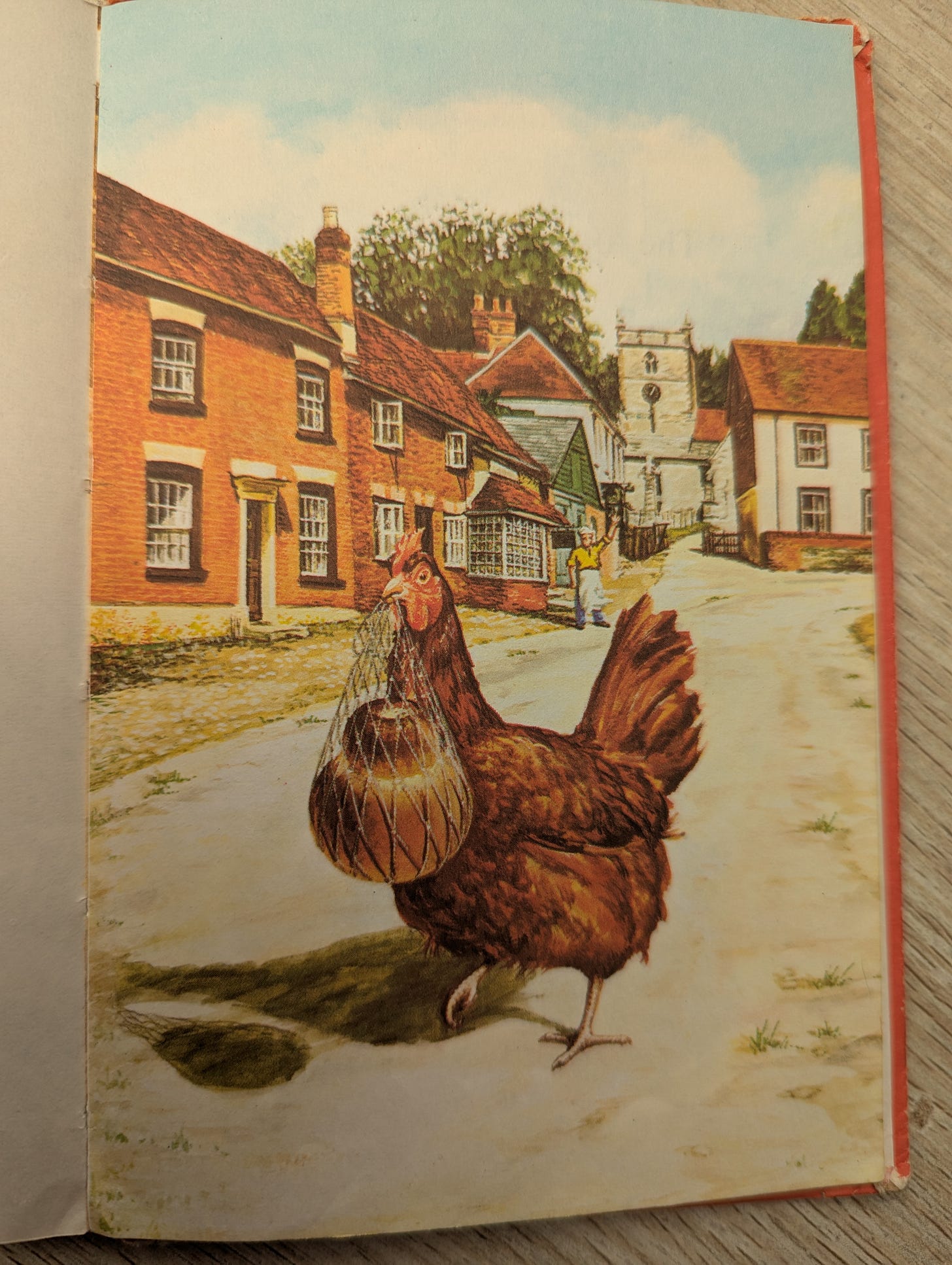
So this month I bring you some thoughts on the Ladybird series of Well-Loved Tales Series 606D. Covering a huge range of fiction and non-fiction, the British press Ladybird books taught me and my peers, children in the 60s and 70s so much: History, Science, Geography, how to identify native birds and flowers, and how to read through the Peter and Jane series. The Well-Loved series, the stories retold by Vera Southgate, the illustrations by Eric Winter and Robert Lumley, introduced us to fairy and nursery tales. With hard covers to make them last under much usage, they opened to show spread after spread with a full page illustration on each left side in jewel colours. My first, I believe, was Cinderella, a gift from my playgroup (a British 1970s version of kindergarten/preschool) when I left. I’d been given a choice of books, and I went for this one because on the cover she wore a pink dress – four year olds tend to make these surface decisions. In the Ladybird version, she goes to the ball three times, with a different outfit on each occasion. The storyteller here knew that the real interest is in a girl getting to go out and party. The prince is an extra, a ticket to a life of permanent pretty dresses and final triumph over the nasty stepsisters: it’s not really a love story at all. As I grew older, my favourite dress changed to the silver one, then the blue. These days I’m more invested in why the godmother has to dress as such a frump.
I was leaving playgroup not to go to school but to travel to Nigeria, where I was moving with my family. Four years later we were obliged to leave the country at short notice, by car, so my parents sold or gave away anything we couldn’t get in the car. Many of the books I’d read as as small child got left behind, including, I suspect, Cinderella. But the memories stayed, and I borrowed many from the school library in our new home in Ghana, and then as an adult I picked up every second-hand copy I could find. The range, within European tradition, is wide: not just princess stories, but many of the entertaining animal tales too, like The Wolf and the Seven Kids, and a few lesser-know cottagey stories like The Magic Porridge Pot.
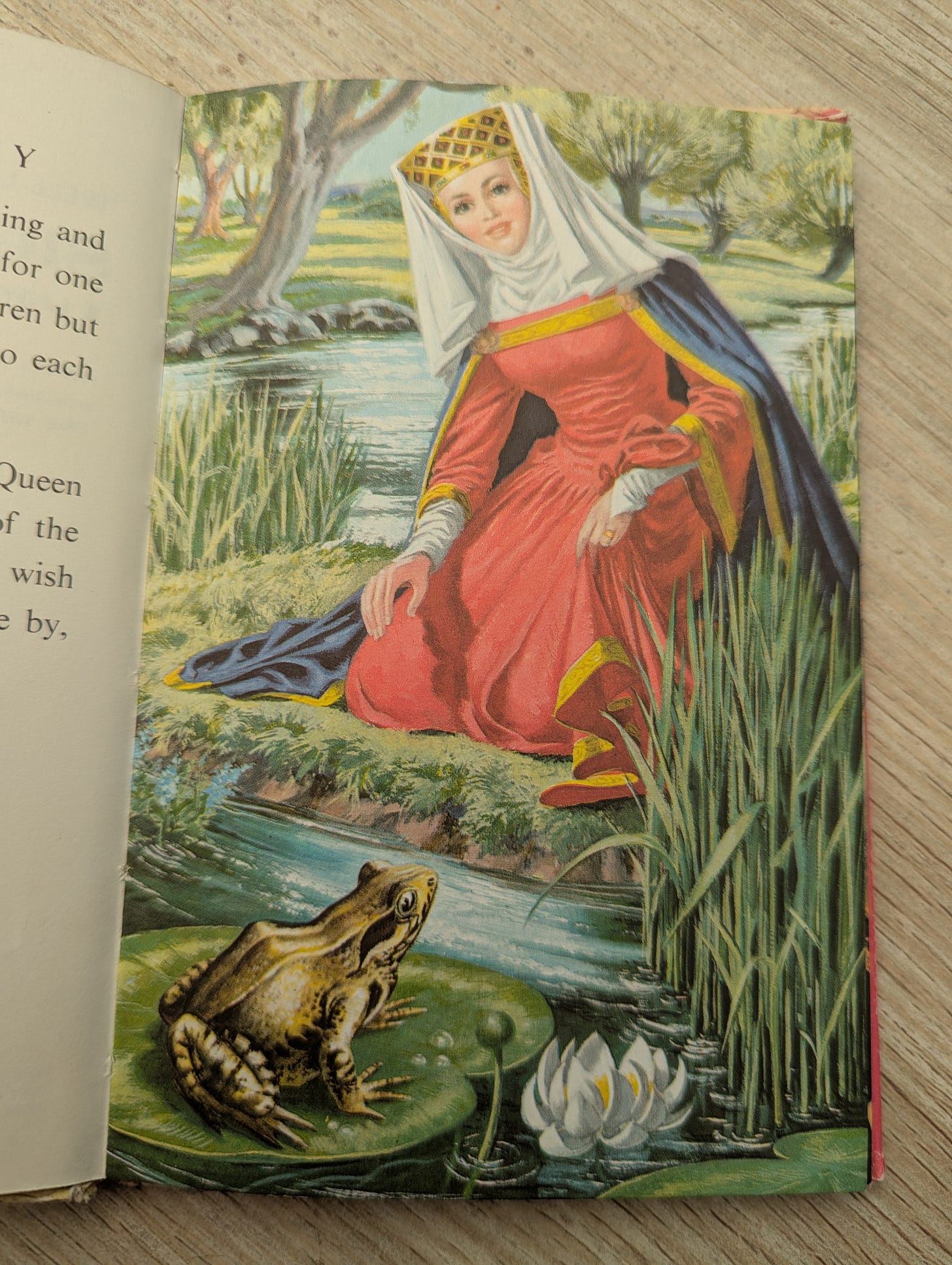
Looking at them with an adult’s eye, I find the heroines rather insipid. Oh, the tears that well up in Cinderella’s eyes when she’s left behind! Ones that teeter in the corner of each eye, never scrunching her face into ugliness! Dear me, why does the “rescue” fairy in Sleeping Beauty look like a flower fairy? But they were a stepping stone to exploring other ways to tell these oh-so-flexible stories that can be bent into so many different shapes.

